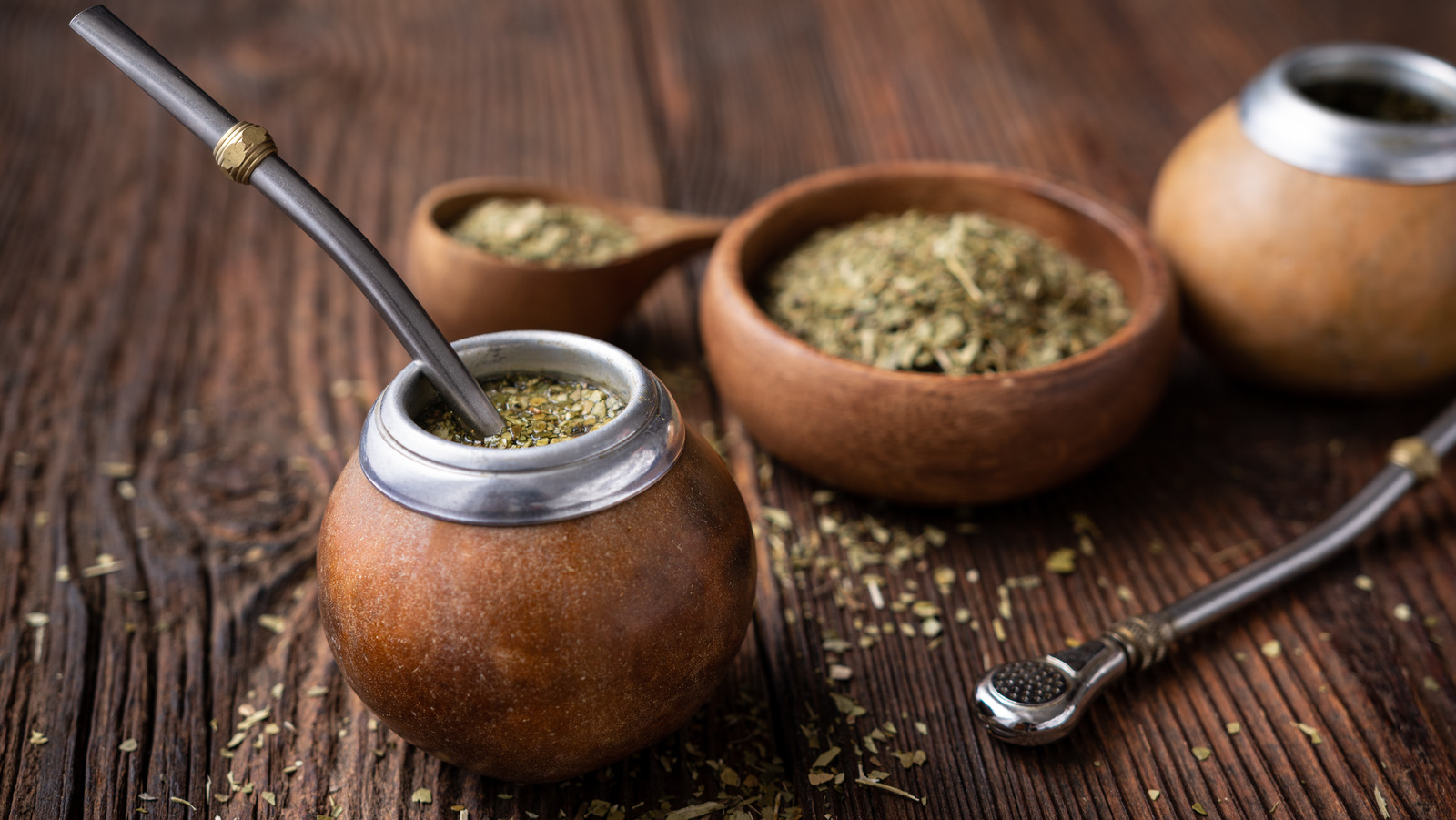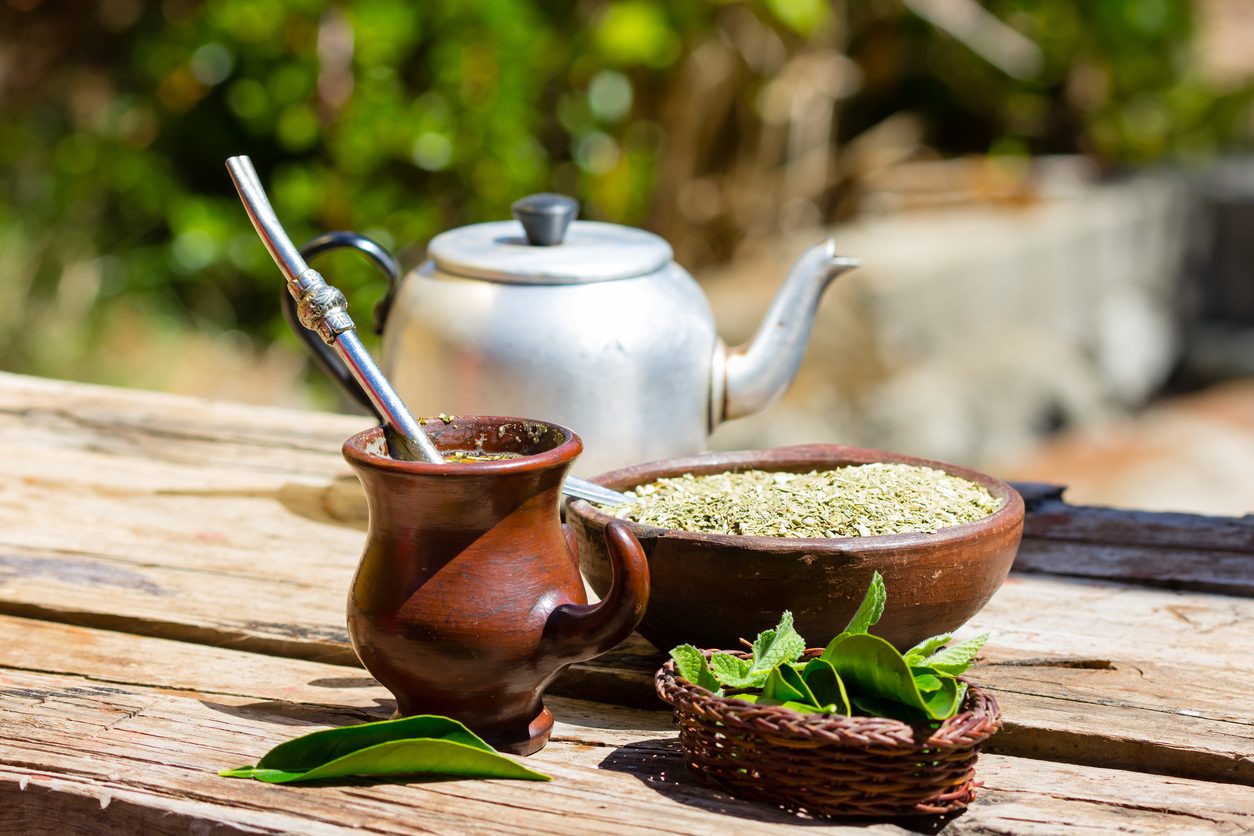Could a single beverage truly offer the health benefits of tea, the invigorating kick of coffee, and the comforting essence of chocolate? The answer, surprisingly, is yes, and it comes in the form of Yerba Mate, a South American super brew.
This stimulating drink, also known simply as "mate," has been a cornerstone of South American culture for centuries, and its popularity is rapidly spreading across the globe. Derived from the leaves of the Ilex paraguariensis plant, yerba mate offers a unique blend of caffeine, antioxidants, and other beneficial compounds that contribute to its diverse health benefits. But what exactly is yerba mate, and why has it captured the attention of health enthusiasts and casual consumers alike?
Yerba Mate
To understand yerba mate, we must first consider its origins. The Ilex paraguariensis plant, a member of the holly family, is native to South America, primarily in Argentina, Brazil, Paraguay, and Uruguay. The Guaran people, indigenous to the region, were the first to discover and consume yerba mate, recognizing its energizing and medicinal properties. They traditionally consumed the leaves, steeped in hot water. Over time, this practice evolved, with the leaves being dried, chopped, and then infused to create the beverage we know today.
- Hamilton Cast Original A Deep Dive Into The Phenomenal Musical
- George Straits Wife A Look At Their Life Together And Captivating Pictures
Yerba mate is much more than a simple beverage; it's a cultural symbol. In many South American countries, sharing a mate is a sign of friendship and hospitality. The drink is typically prepared in a gourd, known as a "mate," and sipped through a metal straw called a "bombilla." This communal ritual fosters a sense of community and connection, adding a social dimension to the consumption of yerba mate. The preparation of the drink and drinking is a ritual, where passing the mate and bombilla among a group is a sign of trust and bonding.
The brewing process is simple, yet crucial to the flavor and effect of the drink. The dried and chopped leaves of the yerba mate plant are placed in the gourd, and hot (but not boiling) water is added. The "bombilla" acts as a filter, preventing the leaves from entering the mouth, allowing the person to drink the infusion.
The leaves are harvested and processed, a crucial step in determining the final quality of the yerba mate. After harvest, the leaves are often subjected to a brief roasting process, which helps to reduce the moisture content and enhance their flavor profile. They are then typically dried, cut, and aged, which helps to develop the characteristic taste and aroma. The leaves can be found with stems, or without and are then graded, according to their leaf size and stem content. The final product is a blend of leaves, stems, and sometimes, small pieces of the leaf.
- Who Is Jenifer Lewis Husband Arnold Byrd Everything You Need To Know
- Kymani Marley The Multifaceted Legacy Of Bob Marleys Son
The flavor of yerba mate is often described as earthy, herbal, and slightly bitter, but the flavor can vary depending on the processing and preparation methods used. The taste is influenced by factors such as the roasting process and the type of wood used during drying. Some varieties of yerba mate are smoked during drying, which lends a smoky note to the flavor. Different regions and brands also offer different flavors and textures, with the quality and type of leaves and stems used influencing the overall experience.
Yerba Mate is versatile, it can be enjoyed both hot and cold. Hot yerba mate is prepared by infusing the dried leaves with hot water, as described earlier. This is the traditional method and is enjoyed in South American cultures. It provides a warming, energizing experience. Cold yerba mate, or "terer," is a refreshing option, especially in hot weather. It is prepared by infusing the leaves with cold water or juice, and is popular in Paraguay, and other regions. The choice of hot or cold, is all personal, and reflects the individual preference of the drinker.
| Feature | Details |
|---|---|
| Scientific Name | Ilex paraguariensis |
| Family | Aquifoliaceae (Holly Family) |
| Origin | South America (Argentina, Brazil, Paraguay, Uruguay) |
| Common Names | Yerba Mate, Mate |
| Form | Evergreen shrub or tree |
| Main Components | Caffeine, Antioxidants (polyphenols), Vitamins, Minerals |
| Preparation | Infusion of dried leaves in hot or cold water |
| Traditional Use | Energizing drink, cultural significance |
| Flavor Profile | Earthy, herbal, slightly bitter |
| Serving | Hot or cold |
| Cultural Significance | Social ritual in South America |
| Reference | National Center for Biotechnology Information (NCBI) - Yerba Mate: An Overview |
The consumption of yerba mate is associated with a range of potential health benefits. As mentioned earlier, yerba mate contains caffeine, which is well-known for its stimulant properties. Caffeine can increase alertness, focus, and physical performance, making it an excellent choice for those seeking a natural energy boost.
Beyond caffeine, yerba mate is rich in antioxidants, particularly polyphenols, including chlorogenic acid and caffeoyl derivatives. These antioxidants help to protect cells from damage caused by free radicals, which can contribute to various health problems. They can prevent heart diseases.
Some research suggests that yerba mate may also have metabolic benefits. It is believed that it could help with weight management, with some studies suggesting it may increase fat burning and improve insulin sensitivity. Additionally, yerba mate might support heart health by helping to reduce cholesterol levels and improve blood pressure.
Yerba mate can also support physical performance. Studies have found that yerba mate can improve endurance and reduce fatigue during exercise. It helps with the physical strength.
While yerba mate is generally considered safe, it is essential to be aware of potential contraindications. Some people may experience side effects such as anxiety, insomnia, or digestive issues due to the caffeine content. It is advised to consume it with caution.
Additionally, it's important to note that some studies have raised concerns about the potential link between high yerba mate consumption and certain types of cancer, particularly in the esophagus and bladder. However, these studies have not been conclusive. As with any beverage or supplement, moderation is key.
The method of preparation and consumption plays an important role in the overall experience. The traditional method of preparing yerba mate involves using a gourd (mate) and a metal straw (bombilla). This method not only is part of the culture, but also can affect the taste and quality of the brew.
The choice of water temperature affects the extraction of flavors and compounds from the yerba mate leaves. The choice of temperature can be between 70-80C (158-176F), to get the desired brew. The process is slow, and can be consumed several times.
The versatility of yerba mate is not limited to the traditional methods. Today, it can be found in various forms, including tea bags, loose-leaf blends, and even ready-to-drink beverages. This variety makes it easier for people to incorporate yerba mate into their daily routines, regardless of their lifestyle.
Many brands are offering yerba mate blends, combined with other herbs, fruits, and flavors, which enhance the experience and provide consumers with unique options.
Yerba mate's cultural impact extends beyond the borders of South America. As its health benefits and unique flavor have become more known, it has gained popularity in different parts of the world. This worldwide attention has lead to greater awareness and availability of yerba mate products in the international market.
The growing popularity of yerba mate is contributing to the expansion of its market, creating business and trade opportunities for the people in South America, and the rest of the world.
In conclusion, yerba mate is more than just a beverage. It is a drink with rich history. Its unique flavor, cultural significance, and health benefits have captured the interest of people around the world. Whether you are looking for a natural energy boost, antioxidants, or a taste of South American culture, yerba mate can be a great choice.
- Trent Alexanderarnold A Deep Dive Into His Parents And Their Influence
- All About Tom Seguras Wife A Deep Dive Into Their Relationship And Life Together


